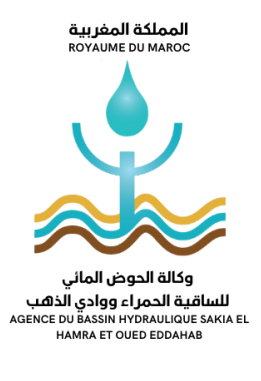- Home
- Agency
- Missions
- Evaluation and Monitoring of Water Resources
- Planning and Management of Water Resources
- Granting of Authorizations and Concessions
- Prevention And Protection Against Floods.
- Review of Projects Impacting Water Resources
- Financial and Technical Assistance
- Research and Development
- Integrated Water Management and Control of Water Use
- Services
- E-ABHSHOD
- Webmail Access
- Platform MAA DIALNA
- Tenders ABHSHOD
- Public Procurement Portal
- FAOLEX Database
- Platform of the Ministry of Equipment and Water
- Platform AJAL
- Platform ROKHAS
- Platform MAJALISS
- Transparency Portal
- National Claims Portal
- National portal of citizen participation
- Electronic administrative document control terminal
- Media Library
- Blog
- English
Conducting measurements, investigations, and necessary studies to assess and monitor the evolution of the state of water resources both quantitatively and qualitatively, as well as those related to planning, management, water preservation, and prevention of the effects of extreme climatic phenomena, including floods and droughts;
This mission is crucial to ensure informed, sustainable, and proactive management of the region’s water resources. Here is a detailed expansion of this mission:
- Measurements and Investigations:
- The Agency conducts regular field measurements, collecting quantitative and qualitative data on water resources. This includes measuring river flows, monitoring water levels, and analyzing physicochemical characteristics of the water.
- Studies for Quantitative Assessment:
- In-depth studies are undertaken to quantitatively assess the availability of water resources. This includes analyzing hydrological regimes, quantifying groundwater reserves, and projecting long-term trends based on anticipated needs.
- Studies for Qualitative Assessment:
- The Agency conducts comprehensive studies to assess water quality in the region. This involves analyzing physical, chemical, and biological parameters to ensure water safety and identify any pollution risks.
- Monitoring the Evolution of Resource Status:
- Continuous monitoring is established to track the evolution of water resource status. This allows for quick identification of changes, anticipation of potential issues, and adjustment of management strategies accordingly.
- Planning for Water Resource Management:
- Based on quantitative and qualitative assessments, the Agency participates in planning water resource management. This involves developing strategies for equitable resource allocation, defining usage priorities, and promoting sustainable use.
- Management of Extreme Climatic Events:
- The Agency integrates the management of extreme climatic phenomena such as floods and droughts into its studies and plans. This includes implementing preventive measures, crisis management during these events, and planning for climate change adaptation.
- Early Warning Systems:
- In the event of risks related to extreme climatic phenomena, the Agency develops early warning systems. These systems alert the local population, authorities, and stakeholders in a timely manner, thereby minimizing negative impacts.
- Hydrological Modeling:
- The Agency uses advanced hydrological models to simulate and anticipate variations in water resources. This allows for assessing possible scenarios, optimizing flow management, and improving water usage planning.
- Water Conservation Awareness:
- The results of assessments and monitoring are used to raise awareness among the local population about water issues. Educational campaigns are organized to encourage water conservation, adoption of efficient technologies, and active participation in preserving water resources.
- Coordination with Regional Stakeholders:
- The Agency coordinates its assessment and monitoring activities with other regional stakeholders such as local authorities, meteorological services, environmental management organizations, and other partners to ensure an integrated approach.
- Research and Development:
- In partnership with scientific institutions and specialized laboratories, the Agency contributes to research and development of new methodologies and technologies to enhance the assessment and monitoring of water resources.
- Periodic Reports:
- The Agency publishes periodic reports on the state of water resources in its operational area. These reports provide transparent information about trends, challenges, and actions taken for sustainable water management.
In summary, the ‘Assessment and Monitoring of Water Resources’ mission of the Sakia El Hamra and Oued Eddahab Hydraulic Basin Agency encompasses a wide range of activities aimed at minimizing flood risks, protecting communities and infrastructure, and promoting sustainable water resource management in the region.

